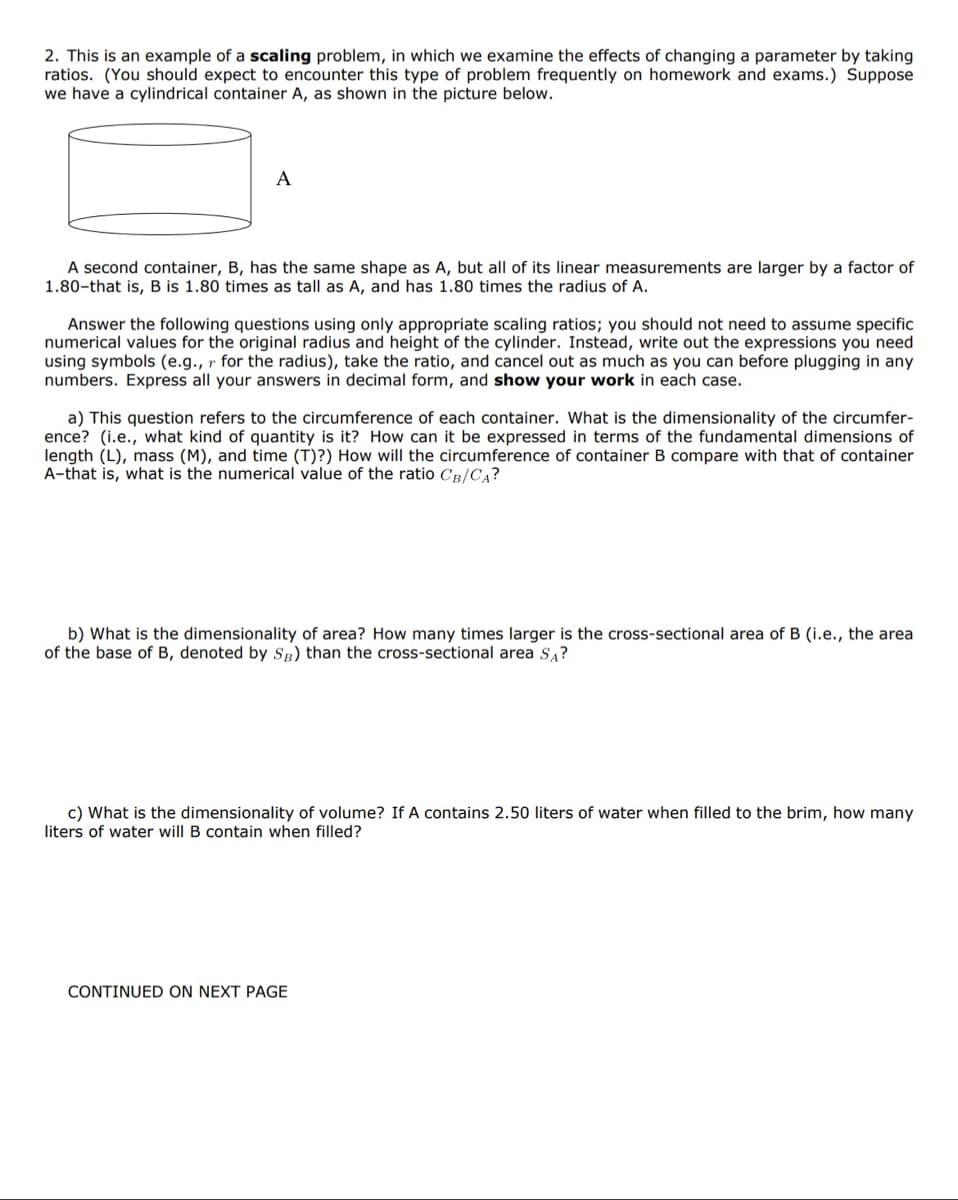b) What is the dimensionality of area? How many times larger is the cross-sectional area of B (i.e., the area of the base of B, denoted by SB) than the cross-sectional area SA?
b) What is the dimensionality of area? How many times larger is the cross-sectional area of B (i.e., the area of the base of B, denoted by SB) than the cross-sectional area SA?
Functions and Change: A Modeling Approach to College Algebra (MindTap Course List)
6th Edition
ISBN:9781337111348
Author:Bruce Crauder, Benny Evans, Alan Noell
Publisher:Bruce Crauder, Benny Evans, Alan Noell
Chapter5: A Survey Of Other Common Functions
Section5.2: Power Functions
Problem 17E: Tsunami Waves and BreakwatersThis is a continuation of Exercise 16. Breakwaters affect wave height...
Related questions
Question
Part B only please

Transcribed Image Text:2. This is an example of a scaling problem, in which we examine the effects of changing a parameter by taking
ratios. (You should expect to encounter this type of problem frequently on homework and exams.) Suppose
we have a cylindrical container A, as shown in the picture below.
A
A second container, B, has the same shape as A, but all of its linear measurements are larger by a factor of
1.80-that is, B is 1.80 times as tall as A, and has 1.80 times the radius of A.
Answer the following questions using only appropriate scaling ratios; you should not need to assume specific
numerical values for the original radius and height of the cylinder. Instead, write out the expressions you need
using symbols (e.g., r for the radius), take the ratio, and cancel out as much as you can before plugging in any
numbers. Express all your answers in decimal form, and show your work in each case.
a) This question refers to the circumference of each container. What is the dimensionality of the circumfer-
ence? (i.e., what kind of quantity is it? How can it be expressed in terms of the fundamental dimensions of
length (L), mass (M), and time (T)?) How will the circumference of container B compare with that of container
A-that is, what is the numerical value of the ratio CB/CA?
b) What is the dimensionality of area? How many times larger is the cross-sectional area of B (i.e., the area
of the base of B, denoted by SB) than the cross-sectional area SA?
c) What is the dimensionality of volume? If A contains 2.50 liters of water when filled to the brim, how many
liters of water will B contain when filled?
CONTINUED ON NEXT PAGE
Expert Solution
This question has been solved!
Explore an expertly crafted, step-by-step solution for a thorough understanding of key concepts.
This is a popular solution!
Trending now
This is a popular solution!
Step by step
Solved in 3 steps with 3 images

Recommended textbooks for you

Functions and Change: A Modeling Approach to Coll…
Algebra
ISBN:
9781337111348
Author:
Bruce Crauder, Benny Evans, Alan Noell
Publisher:
Cengage Learning

Functions and Change: A Modeling Approach to Coll…
Algebra
ISBN:
9781337111348
Author:
Bruce Crauder, Benny Evans, Alan Noell
Publisher:
Cengage Learning